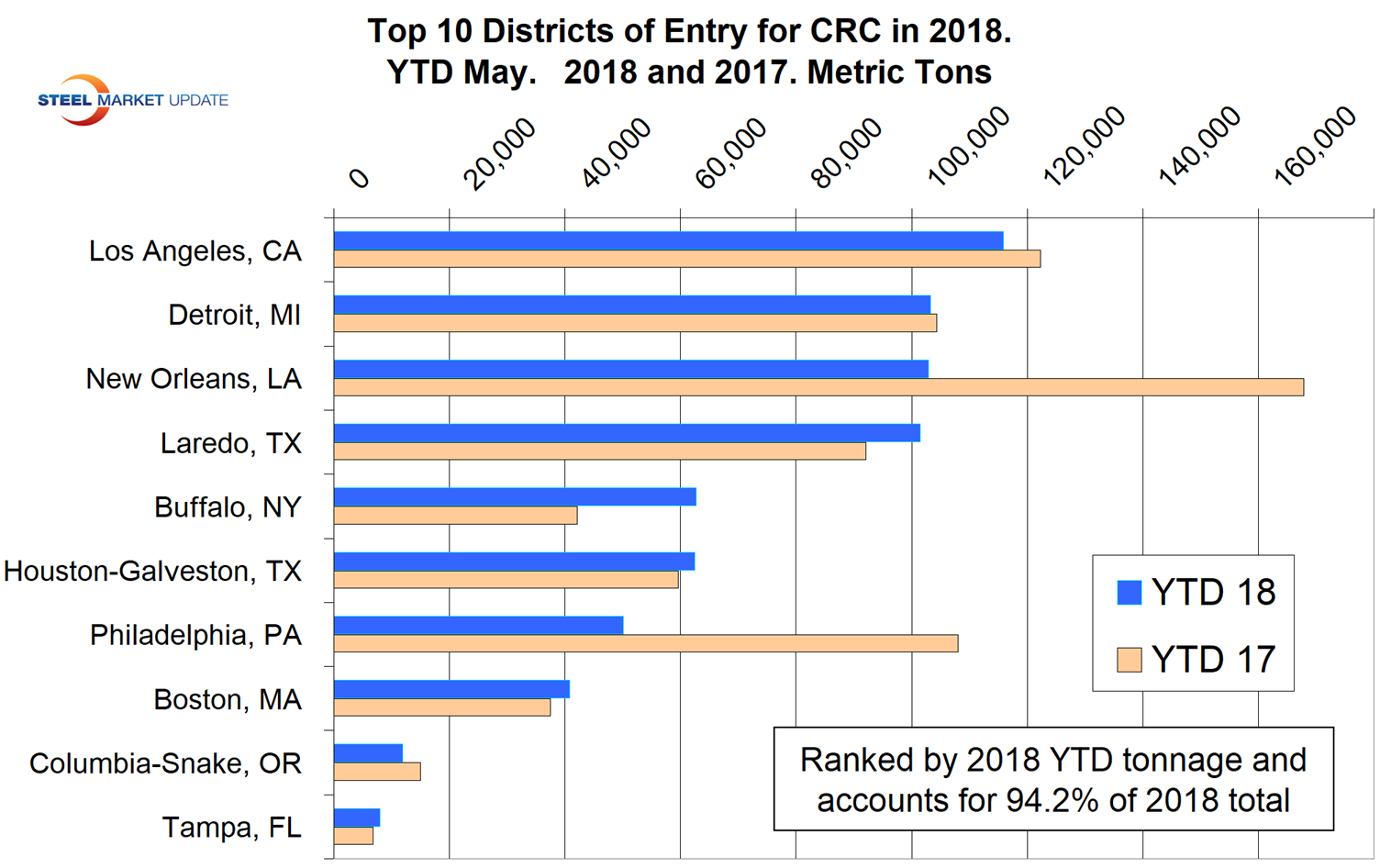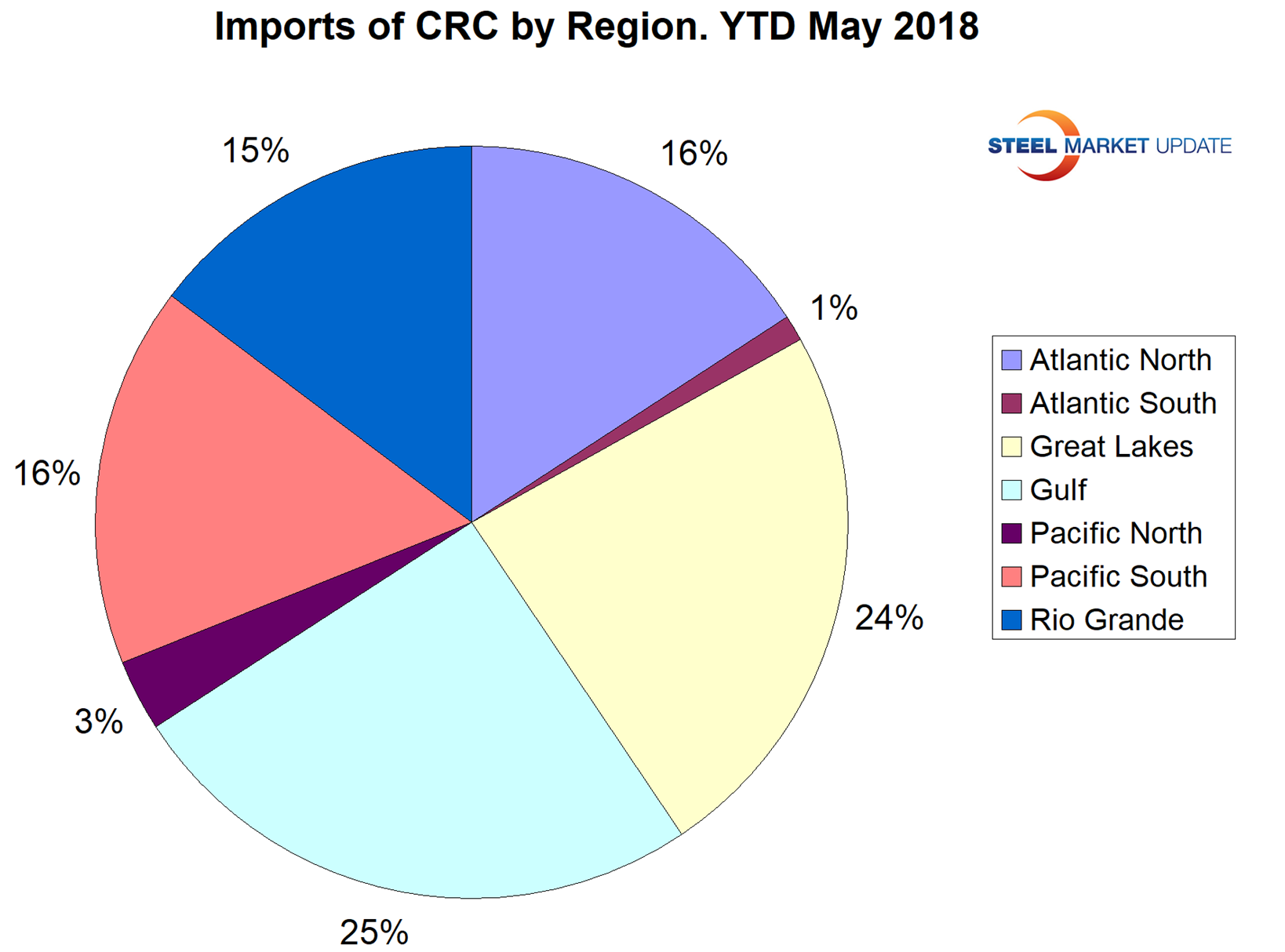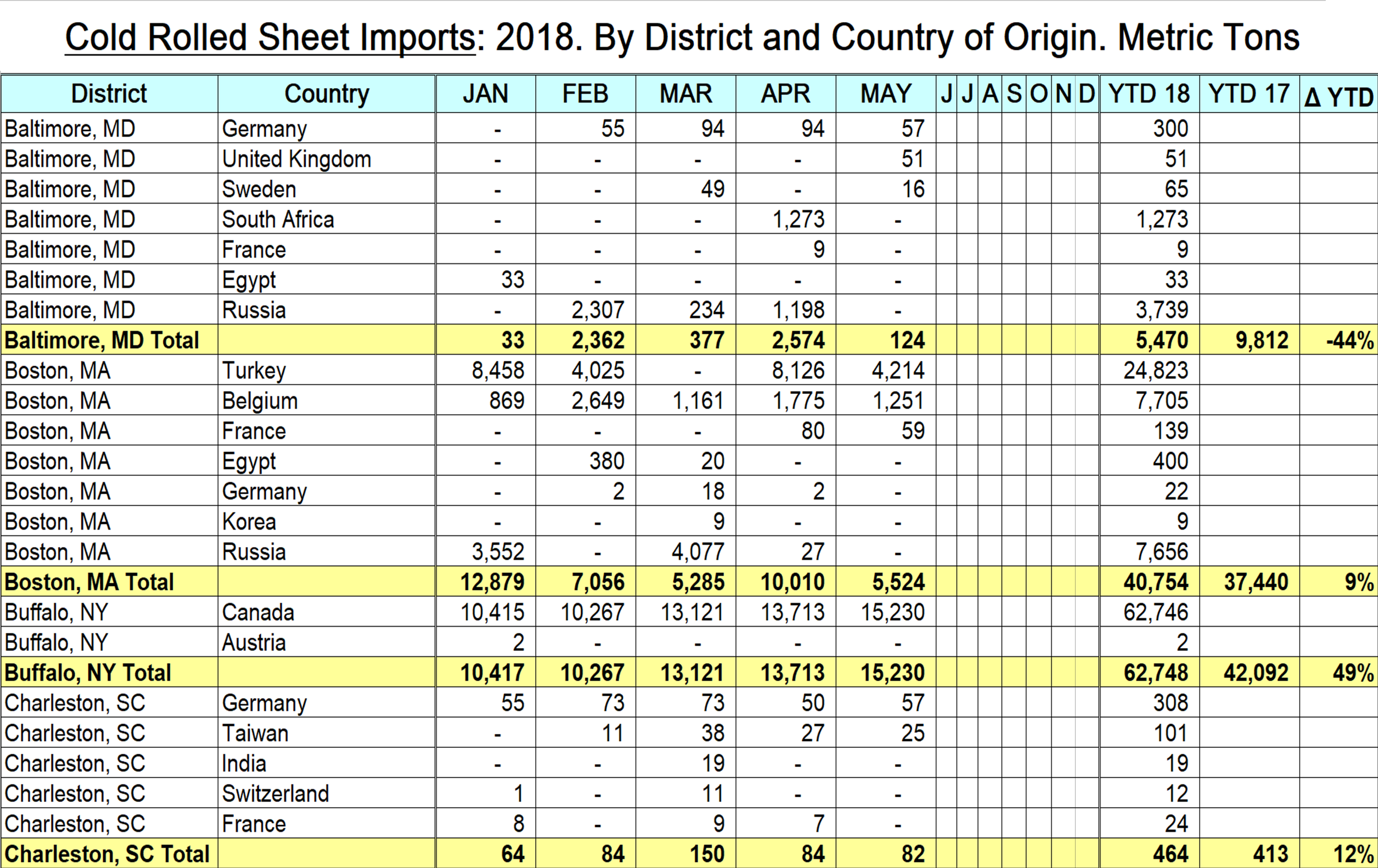Steel Products Prices North America

Flat Roll Imports by District of Entry and Source-May 2018
Written by Peter Wright
July 13, 2018
This analysis breaks down the imported tonnage of six flat rolled products into the district of entry and the source country. We believe that misinformation (or lack of) about local import volumes is often used to influence purchase decisions. Our intent with this analysis is to describe in detail what is going on in a company’s immediate neighborhood and thus provide a negotiating advantage for our premium subscribers.
![]() Premium members will find reports on our website that break down the import tonnage through May into the port of entry and country of origin in metric tons. Products analyzed in this way are HRC, CRC, HDG sheet, OMC sheet, CTL plate and coiled plate. This data set is large; therefore, we will make no attempt to provide a commentary. Each reader’s interest will be different and he or she simply needs to select one of the six products, then find the nearest port or ports of entry to see how much came into their locality each month and from where. Monthly data is provided back to January 2015. It is clear from these detailed reports that the change in tonnage entering a particular district in many cases is completely different than the change in volume at the national level.
Premium members will find reports on our website that break down the import tonnage through May into the port of entry and country of origin in metric tons. Products analyzed in this way are HRC, CRC, HDG sheet, OMC sheet, CTL plate and coiled plate. This data set is large; therefore, we will make no attempt to provide a commentary. Each reader’s interest will be different and he or she simply needs to select one of the six products, then find the nearest port or ports of entry to see how much came into their locality each month and from where. Monthly data is provided back to January 2015. It is clear from these detailed reports that the change in tonnage entering a particular district in many cases is completely different than the change in volume at the national level.
Here are some examples to illustrate why this information can be actionable: Total cold rolled sheet imports in May year to date were down by 17 percent, but Chicago was down by 86 percent and Laredo was up by 10 percent. Total HDG imports were down by 11 percent in May, but Detroit was up by 16 percent and Houston was down by 20 percent. Total hot rolled sheet imports were up by 35 percent, but Los Angeles was up by 62 percent, while Chicago was down by 24 percent. Total other metallic coated, mainly Galvalume, was down by 18 percent, but Houston was down by 27 percent, while Cleveland was up by 292 percent. The discrepancy between the changes at the national and local levels is why it’s important for both market understanding and negotiating position to know what’s going on in your own backyard.
The table included here (click to enlarge) is a small part of the detailed analysis of the cold rolled sheet tonnage. The bar graph shows the tonnage of cold rolled that entered the top 10 districts in YTD May for 2017 and 2018 ranked by 2018 tonnage. Los Angeles had the most volume followed by Detroit and New Orleans. New Orleans and Philadelphia had the biggest change compared to last year.

We are now producing regional reports for the same six products, which consolidates the data by district. Seven regions are considered: Pacific North and South, the Atlantic North and South, the Gulf, Great Lakes and the Rio Grande Valley. The pie chart shown here is a regional analysis for cold rolled sheet.

These detailed reports are compiled from tariff and trade data published by the U.S. Department of Commerce and the U.S. International Trade Commission. Our national level import reports are sourced from U.S. Department of Commerce, Enforcement and Compliance, aka the Steel Import Monitoring System. In the development of these reports by district and source country, we have discovered that the SIMA data for HRC and CRC contains some high-alloy steel such as stainless and tool steel, which have been misclassified at the ports. These alloy steels are not included in our detailed reports, which results in a small discrepancy between the two data sets for CRC and HRC.

Peter Wright
Read more from Peter WrightLatest in Steel Products Prices North America

CRU: US rebar and wire rod prices rise alongside S232 increase
CRU Senior Steel Analyst Alexandra Anderson discusses current market and pricing dynamics for long steel products in the US.

SMU Price Ranges: Sheet and plate steady ahead of Independence Day
Sheet and plate prices were little changed in the shortened week ahead of Independence Day, according to SMU’s latest check of the market.

Nucor maintains plate prices, opens August order book
Nucor aims to keep plate prices flat again with the opening of its August order book.

Nucor CSP remains level at $900/ton
Nucor maintained its weekly list price for hot-rolled (HR) coil this week, following two consecutive increases.

Cliffs raises prices, seeks $950/ton for July spot HR
Cleveland-Cliffs plans to increase prices for hot-rolled (HR) coil to $950 per short ton (st) with the opening of its July spot order book. The Cleveland-based steelmaker said the price hike was effective immediately in a letter to customers dated Monday.

